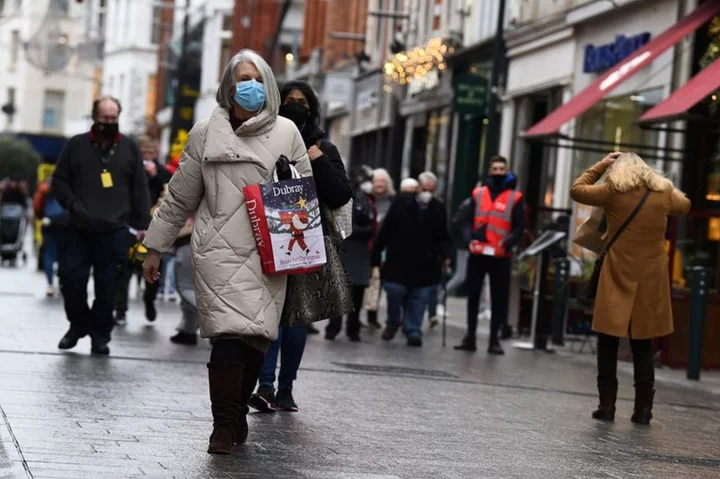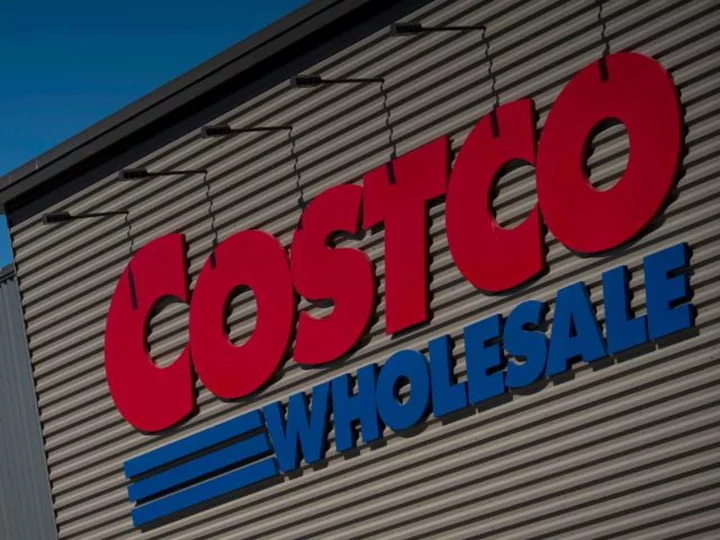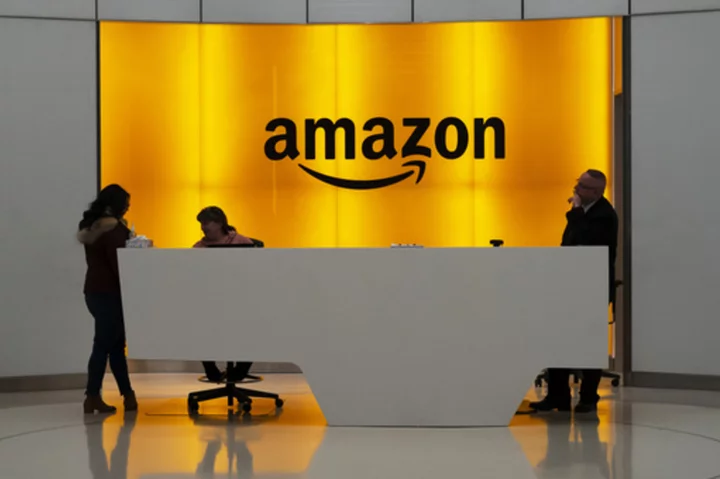WASHINGTON (AP) — Inflation in the United States likely remained high last month, a trend that if sustained could raise concerns at the Federal Reserve, which is considering whether to raise interest rates again. Still, cheaper gas might have slowed a broad measure of overall inflation in October.
Excluding volatile food and energy prices, core inflation is forecast to have risen 0.3% from September to October for a third straight month, according to economists surveyed by FactSet. Monthly increases at that pace would be too high to meet the Fed’s 2% annual inflation target. Economists pay particular attention to core prices, which are believed to provide a good signal of inflation’s likely future path.
Tuesday's report from the Labor Department is expected to show that overall consumer prices ticked up just 0.1% from September to October, much lower than the 0.4% and 0.6% increases in August and September. A 2% monthly drop in energy prices was likely the main reason for the smaller rise.
The figures arrive as Fed officials, led by Chair Jerome Powell, are assessing whether inflation is still slowing from its peaks of last year or whether progress has stalled and another rate hike might be necessary. To fight high inflation, the Fed has raised its benchmark rate 11 times in the past year and a half, to about 5.4%, the highest level in 22 years.
The central bank's rate hikes have increased the costs of mortgages, auto loans, credit cards and many forms of business borrowing, part of a concerted drive to slow growth and cool inflation pressures. The Fed is trying to achieve a “soft landing” — raising borrowing costs just enough to curb inflation without tipping the economy into a deep recession.
The rate increases have had some impact: Year-over-year inflation has dropped from a peak of 9.1% in June 2022, the highest level in four decades, to 3.7% in September. That figure is forecast to have fallen further in October to 3.3%.
Yet strong consumer spending and solid job growth have suggested that the economy might not be cooling enough to drive inflation down, particularly in services fields like medical care, housing and travel. Prices are often “stickier” in those industries because they mainly reflect labor costs, which are not directly affected by interest rates.
Last week, Powell warned that if inflation didn't cool fast enough, the Fed “will not hesitate” to raise rates further. Still, the central bank's policymakers have left their key short-term rate unchanged since July, and most economists say they think the Fed is done hiking.
Prices first accelerated in 2021 as consumers stepped up spending amid a fading pandemic. Much greater demand ran headlong into snarled supply chains, which led retailers and other companies to quickly jack up prices. Inflation has since eased as supply chains have improved and higher borrowing rates have weakened some industries, notably housing.
But in his remarks last week, Powell said that further reductions in inflation might require a cooldown in spending in addition to further improvements in supply networks — a distinction that potentially points to further hikes.
Chronic core inflation for an extended period could eventually force the Fed to raise its rate benchmark again. Core prices are expected to have risen 4.1% in October from a year ago for a second straight month, according to FactSet. Some analysts think it might have accelerated to 4.2%, which would be the first such pickup since March.
“If core is sticky... then there’s little doubt that the Fed will look to (raise rates) again,” Jim Reid, a research strategist at Deutsche Bank, wrote in a note to clients. “So we’re at an important juncture.”
Economists are expected to keep a close eye on several metrics in Tuesday's report, including the cost of rent and housing, health insurance and services such as dining out, entertainment and travel.
Starting with Tuesday’s price report, the government will alter how it calculates health insurance costs, and the changes are expected to result in higher overall inflation rates in the coming months. Health insurance costs have fallen 3.5% each month for the past year, according to the government's measure. But under its updated methods, they're expected to flip to increases of about 0.5% a month through next spring. The change partly reflects the upheaval in the health care industry after the pandemic, which is affecting the health insurance figures with a lag.
Housing costs, including rents and the cost of owning a home, jumped 0.6% from August to September, a much faster than expected increase. Analysts expect a smaller gain from September to October, because real-time measures of apartment rents from data providers have shown that the cost of new leases has been rising much more slowly for this year.
Grocery prices are expected to have risen about 0.2% last month. After soaring by double-digits in 2022 compared with a year earlier, grocery costs are now rising at a modest 2.4% annual rate.
Still, many economists say a key reason why most Americans hold a gloomy view of the economy despite very low unemployment and steady hiring is that the costs of things they buy regularly — milk, meat, bread and other groceries — remain so much higher than they were three years ago. Many of these items are still growing more expensive, though more gradually.
“It's the overall price level that I think is affecting people,” Tom Barkin, president of the Federal Reserve Bank of Richmond, said in an interview with the financial news agency MNI. “People are going to the grocery store with very clear memories of how much a 12-pack of Diet Coke cost three years ago and comparing it to how much a 12-pack of Diet Coke costs today. And that change ... is still weighing on sentiment."









